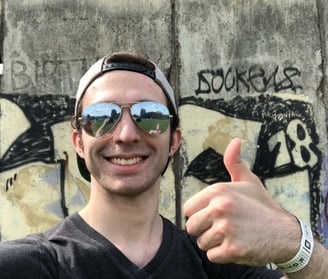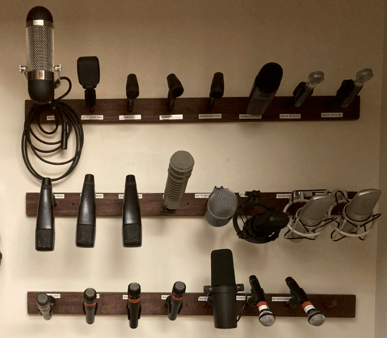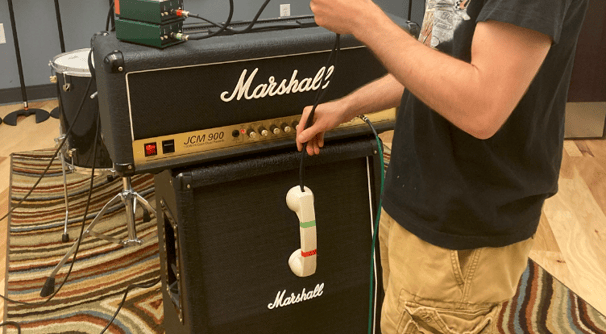Capital University Studio E Microphone Shootout
After almost four months of staying out of the studio when they were closed for the summer, I finally ventured my way back into Studio E for a good old mic shootout experiment.
The Instrument
Unless you’re looking for a very specific tonal quality, recording Electric Guitar is pretty straightforward: close-mic the center of the best sounding speaker cone. The important thing to note is that when recording electric guitar, unless you’re using DI, you’re really recording the amp through which the signal is running. For simplicity purposes, and to maintain variable control, I used the common close-miking technique throughout the entire shootout process.
Experiment
The Gear
The Artist
For this shootout I brought in my good friend (and insanely talented studio technician) Jack Babel. Jack is a punk-rock guitarist in his band 99 Horizons, who also tracked, mixed, and mastered their debut EP Man in the Middle. I genuinely admire his ability to not only identify tonal minutia of his favorite music, but also replicate it for his own growth as a studio engineer.
As a Live sound technician I have wholefully adopted the “use-what-you-have” sentiment that is often seen as taboo in a recording studio. But since I have access to a mic closet, and a general idea of what mics to use for which sources, I enjoy using perceptually unconventional gear to a source, and see what I get. Shootouts are about experimenting, right? So sure, let’s put a vocal mic on a distorted guitar signal and see what we get. It probably won’t sound great, but maybe it’ll be the exact flavor I need for a future project.
The Shootout
Results
The TELLY
Senheisser e906
Shure SM7B
Shure KSM44A
As my first time doing a shootout, I viewed this from a scientific perspective, attempting to control as many variables as possible so the only dependent variable is the color of the microphone. After discussing my concerns with Jack, he suggested re-amping as the most reliable way to isolate one dependent variable. So in the process of this shootout, I also learned re-amping on the fly. Just audio things I suppose. The setup was fairly simple: I ran the guitar signal into a Radial JDI. This signal went through Studio E’s Portico preamp, in and out of Protools for recording purposes, then through a Studio aux into Jack's pedal rig, then his cabinet. This setup allowed full control over everything except the very thing I wanted to shootout: the microphone.
If I were in a recording situation where the guitar was the main instrument, the KSM44A would certainly be my go-to for miking a cab. In terms of frequency response, the KSM stays in the upper range, making it much easier to mix with bass and drums without adding too much mud. It captures the upper-harmonics the best out of all the mics used, leaving a subtle shrill tone that would sound amazing with some flange or other special effects.
I wasn’t too sure how this mic would sound, as it is a vocal mic recording distorted guitar. After some discourse with my colleagues I decided it would be interesting to at least see what results I would get. The final product was a punchy guitar tone that could easily become the center of a mix with a beautifully-balanced low-end. It does not capture the upper-harmonics the way the KSM did, which was expected given the type of each mic.
If the KSM gives more attention to the upper-harmonics and the SM7B delivers more punch, the Sennheiser e906 is our happy medium. In my own personal opinion, there’s nothing really spectacular about this sound. Obviously if it were the only mic I had I would use it, but the guitar simply lacks character. However, in a tune with three guitars, bass, a full kit and stacked vocals, maybe that would be exactly what I want.
Okay, I just thought this would be funny. Everyone loves a good telephone mic. Unfortunately we could not stabilize the telephone on a mic stand, so I put together a strategic system for close miking the cab:




Truly innovative. Anyways, it sounded pretty much exactly how I expected it: all mids and a quiet response. If anything it could be used to add some body to an existing track.


